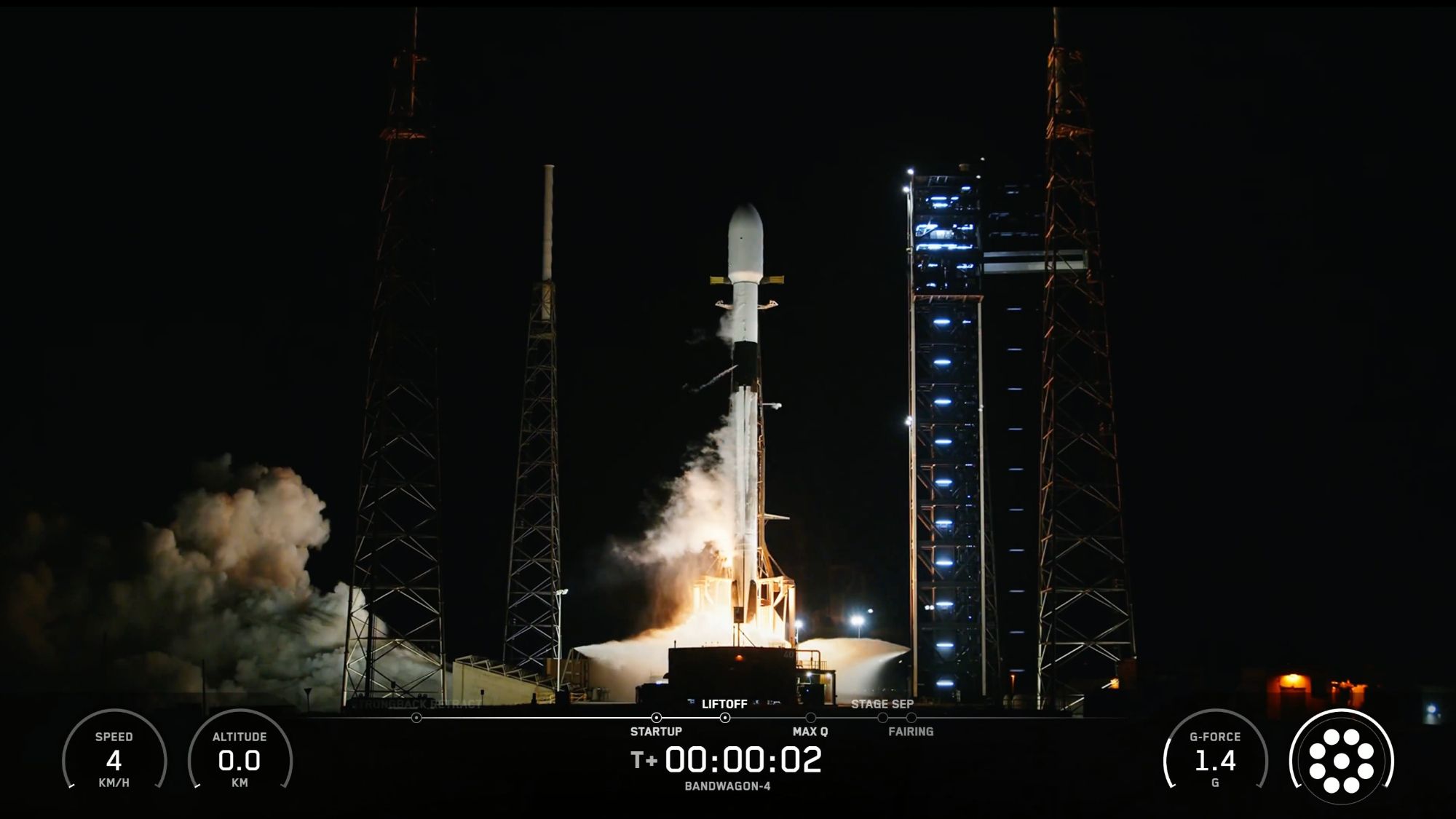SpaceX just launched a satellite that could help pave the way for a private space station in the very near future.
A Falcon 9 rocket lifted off from Cape Canaveral Space Force Station in Florida today at 1:09 a.m. EDT (0509 GMT), on a…

SpaceX just launched a satellite that could help pave the way for a private space station in the very near future.
A Falcon 9 rocket lifted off from Cape Canaveral Space Force Station in Florida today at 1:09 a.m. EDT (0509 GMT), on a…

Adventure (TSE:6030) continues to operate at a loss but has managed to narrow its losses at a steady 5.1% annual rate over the past five years. The stock trades at ¥2,610, just under its estimated fair value of ¥2,624.71, and its Price-To-Sales Ratio of 0.8x remains more attractive than both industry (0.9x) and peer (1.1x) averages. With no major risks flagged and valuation multiples pointing to good value, investors are likely focused on whether this steady improvement in losses sets up a turn to profitability.
See our full analysis for Adventure.
Now we will see how these results compare against the core narratives in the community. In some cases, the numbers will reinforce the story, while in others, they may challenge the prevailing view.
Curious how numbers become stories that shape markets? Explore Community Narratives
Adventure has reduced its losses by an average of 5.1% annually over the last five years, which is a notable multi-year turnaround pace given ongoing unprofitability.
Recent performance highlights the prevailing market view that steady progress toward narrowing losses, even without profits, helps strengthen the fundamental case for patient investors.
This gradual improvement, supported by multi-year incremental gains, challenges the idea that only profitable companies deserve investor attention.
The persistence in shrinking losses, despite lack of headline profitability, underpins why some investors stay positive on the path toward better financial health.
With a Price-To-Sales Ratio of 0.8x, Adventure trades at a level lower than both its industry (0.9x) and peer (1.1x) averages, giving it an edge on traditional valuation metrics.
The prevailing market view leans on this discount as a key reason the stock’s risk/reward skews positively despite the lack of near-term profits.
A lower multiple compared to both industry and peer benchmarks provides support for the view that the downside may be more limited at current prices.
Investors seeking a bargain often prioritize stocks trading below peer averages, especially when other risks are not dominant in recent filings.
The share price of ¥2,610 sits just under the DCF fair value of ¥2,624.71, indicating the market price is essentially aligned with modeled intrinsic value as of the latest filing.
The prevailing market view points out that this tight gap between price and DCF fair value removes a major stumbling block for value-focused investors.
With so little difference between price and calculated fair value, the stock may draw attention from those who see minimal over- or undervaluation right now.
This alignment can also shift the investor focus toward fundamentals and earnings trajectory, rather than chasing a large value gap.


Aker BioMarine (OB:AKBM) remains unprofitable, with losses deepening at an average of 15% per year over the past five years. The latest report highlights no turnaround in net profit margin or high-quality earnings. However, the company’s revenue is forecast to climb 10.8% per year, significantly outpacing the broader Norwegian market’s expected growth of 2.4%. Shares trade at NOK86, well below an estimated fair value of NOK196.27. For investors, the story has shifted to AKBM’s path toward profitability and its rapid earnings growth potential, balanced against stretched price-to-sales multiples compared to peers and continued losses.
See our full analysis for Aker BioMarine.
The next section takes these headline results and sets them directly against Simply Wall St’s community-driven narratives, highlighting which stories hold up and which are challenged by the numbers.
See what the community is saying about Aker BioMarine
Analysts expect profit margins to reverse from negative 6.3% today to a healthy 16.2% in three years, as AKBM’s efficiency initiatives take effect.
According to the analysts’ consensus view, several factors are expected to drive this turnaround:
Centralizing the Human Health Ingredients segment in Houston is intended to streamline production and bring down costs. Successful launches in large U.S. retail chains are anticipated to lift sales volumes and push margins higher.
Efforts to mitigate tariff and supply chain pressures, through programs like duty drawback and optimized export routes to China, are forecast to help stabilize earnings and support margin expansion.
Results reinforce the consensus take that margin improvement depends on both internal cost control and overcoming external headwinds.
📊 Read the full Aker BioMarine Consensus Narrative.
Aker BioMarine carries $157 million of interest-bearing debt, so rising net profits will need to balance against sizable financial obligations as revenue scales up.
Consensus narrative highlights both opportunity and risk:
While revenue is projected to jump 14% a year, high debt levels may restrict the benefits of stronger operations, especially if market conditions become less favorable.
Analysts caution that ongoing restructurings, such as relocating resources to Houston, remain a potential source of extra costs that could impact margin gains expected from growth initiatives.
Shares trade at NOK86, which is well below the DCF fair value of NOK196.27, but remain expensive on a price-to-sales ratio (3.5x) compared to Norwegian food peers (1.3x) and the industry average (1.8x).
Analysts’ consensus view points to an apparent disconnect:
Based on the current share price, the analyst target is 69.12, which is 19.6% lower and implies skepticism about AKBM hitting projected growth and profitability milestones.
Consensus sees future upside as possible but stresses that improvement in operating results is key, not just narrative momentum or sector optimism.

You don’t have permission to access “http://indianexpress.com/article/sports/cricket/australia-vs-india-3rd-t20-live-cricket-streaming-telecast-online-how-to-watch-ind-vs-aus-t20-match-live-score-stream-10340713/” on this…

Lemonsoft Oyj (HLSE:LEMON) posted a net profit margin of 14.5%, down from 16.9% a year ago, with its revenue forecast to grow at 4.1% per year, just trailing the Finnish market average of 4.2%. Earnings are projected to increase at 13.6% per year, compared to the broader market’s 16.7% outlook, and the company has delivered an average annual earnings growth of 11.3% over the past five years. With earnings quality described as high, these results suggest a steady, if slightly slowing, operational performance that positions Lemonsoft as a value contender among its software peers.
See our full analysis for Lemonsoft Oyj.
Next up, we will put these numbers in context by comparing them to the wider market narratives and expectations, spotting where Lemonsoft’s story aligns or veers off track.
Curious how numbers become stories that shape markets? Explore Community Narratives
Lemonsoft’s Price-to-Earnings ratio stands at 28.1x, which is not only right in line with the European software industry average (28x), but also sits well below the immediate peer group average of 42.7x. This gives the stock a relative value edge that was not deeply apparent from first-glance headline metrics.
What stands out for newer investors is that the share price trades below discounted cash flow (DCF) fair value (€7.00 versus €8.34), heavily supporting the view that Lemonsoft offers a margin of safety despite trailing revenue growth.
The DCF fair value calculation is even higher than the industry peer average, suggesting that current market pricing underappreciates Lemonsoft’s underlying fundamentals.
This valuation disconnect is especially notable considering the firm’s recent net profit margin decline, offering a defensive angle even with sector growth cooling.
Lemonsoft’s share price has not been particularly stable over the past three months, even though the company’s forecast profit and revenue growth are positive and not far off the market average.
While recent price fluctuations might concern cautious investors, prevailing analyses suggest that Lemonsoft’s defensive characteristics, such as high earnings quality and continued profit growth at 13.6% per year, help balance out stability risks.
Share price volatility has not corresponded with a sudden deterioration in the company’s fundamentals, which reassures those focused on sustained results rather than short-term price moves.
The company’s average annual earnings growth of 11.3% across five years also offers a buffer that tempers the significance of recent share price swings.

After nearly a quarter century of investigation, scientists have solved a remarkable mystery. Europe’s largest bat doesn’t merely snack on small birds — it hunts and captures them more than a kilometer above the ground and consumes them while…